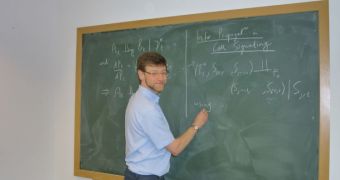Molecular biologists seeking to understand how living cells behave under various conditions may soon be able to move forward in this field, thanks to a new study conducted by investigators in the United Kingdom. The scientists managed to develop a way of removing noise from observations of such cells.
Noise is a generic name given to so-called impurities in the data scientists obtain while observing living cells under advanced microscopes. It is the equivalent of static in an image or video, and it has the tendency to obscure details in scientific observations.
Molecular biology is a very precise field of science, in the sense that all the details of all the processes going on inside cells are of great importance towards understanding biological processes. Since the usual noise can now be removed, significant progress could soon be made in this area.
The work was carried out by University of Bristol School of Mathematics lecturer Dr. Clive Bowsher, and University of Edinburgh Synthetic and Systems Biology expert, professor Peter Swaim. Their study appears in the latest issue of the journal Proceedings of the National Academy of Sciences.
The PNAS paper details the new approach the two scientists developed for separating relevant “signals” from “noise” in readings. The team is keen to point out that biochemical mechanisms such as living cells are inherently noisy.
This means that unpredictable variations (stochasticity) may occur between otherwise-identical cells, and then evolve over time in different directions. Identifying the sources of stochasticity has been a long-standing goal in molecular biology for years.
In addition to finding these sources, experts also need to determine their exact effects, quantify their influences on the cells, and then “distinguish variation that carries information about the biological environment from confounding noise,” a statement released by the University of Bristol explains.
What Bowsher and Swain showed in their PNAS paper is a method for decomposing the fluctuations of biochemical network. This results in obtaining multiple components, which can then be analyzed separately, reducing the overall influence of inherent noise by a wide margin.
“The mathematics provides variance decomposition techniques for dynamic systems,” Bowsher says.
“We were able to make rigorous connections between the concept of intrinsic noise in systems biology, the notion of information capacity used in communications engineering, and a correlation ratio introduced in the 1950s by Alfréd Rényi,” the expert goes on to say.
“We constructed a generalized signal-to-noise measure from the variance components to quantify the efficacy of information flow through a biochemical network,” he concludes.

 14 DAY TRIAL //
14 DAY TRIAL //